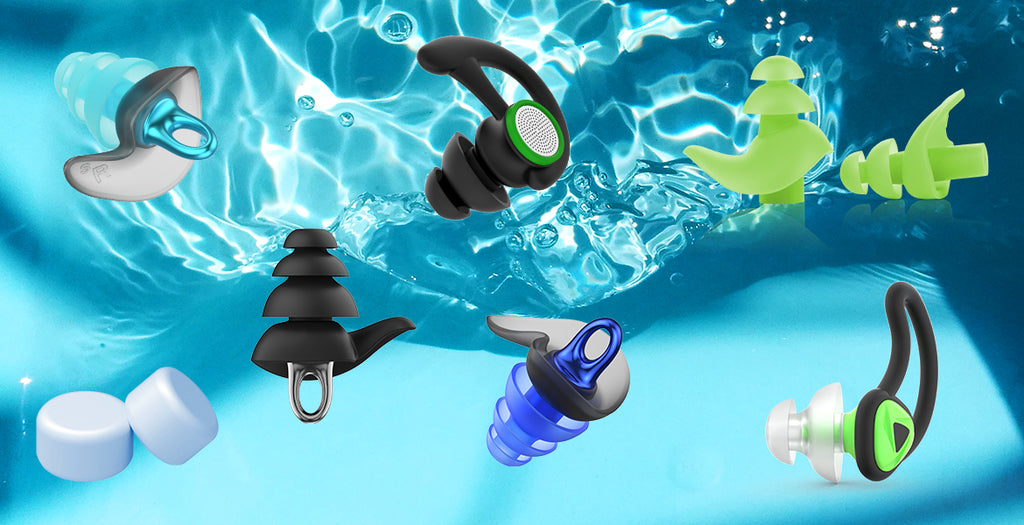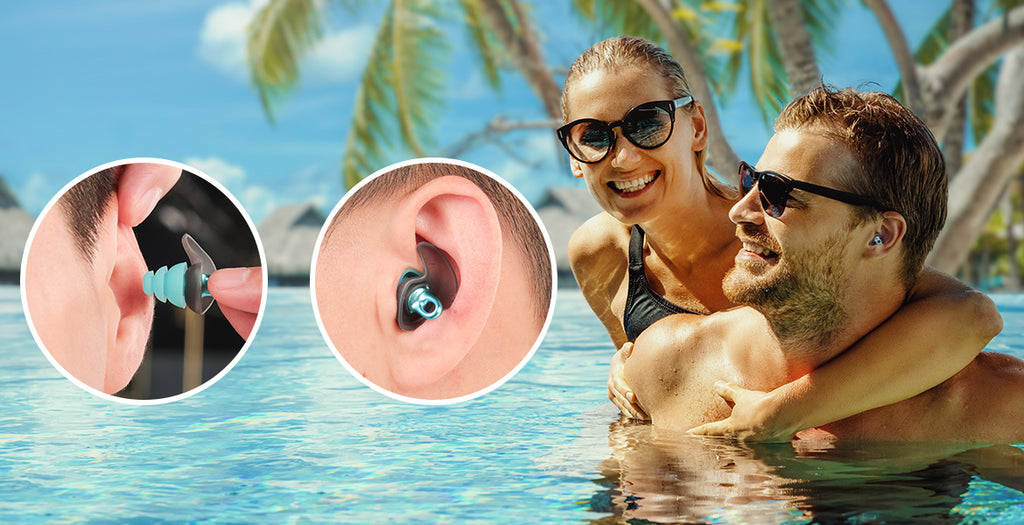Many use earplugs regularly to block out noise, aid sleep, or keep ears clean. But can standard earplugs be safely worn while swimming? Unfortunately, regular earplugs are not designed for water exposure or aquatic pressure changes. To properly protect ears during swimming, specialized swimming earplugs are strongly recommended instead.
In this article, we'll dive into the unique demands of the swimming environment, the drawbacks of using everyday earplugs, and the better-suited options for swimmers' needs. Properly shielding your ears improves comfort, reduces infection risks, and lets you enjoy swimming fully.

Purpose of Earplugs for Swimming
Let's first examine the key reasons you need ear protection while swimming:
- Prevent water from entering the ear canal - Getting water stuck in your ears can cause discomfort, irritation, and infection. Earplugs create a watertight seal.
- Protect the eardrum from pressure changes - Diving and resurfacing cause pressure fluctuations that can damage the eardrum without equalization. Earplugs ease this discomfort.
- Reduce risk of infections - Swimmer's ear and other infections occur more often without sufficient ear protection in pools. Blocking water aids prevention.
- Limit noise exposure - Pool environments tend to be noisy. Earplugs reduce loud whistle blasts or crying kids from irritating ears.
- Specialized earplugs address all these swimming ear hazards and needs.
Drawbacks of Regular Earplugs for Swimming
While handy for everyday use, standard earplugs have considerable downsides for swimming:
- Not waterproof – Most regular earplugs can absorb moisture and swell up when immersed, rendering them ineffective barriers.
- Don't properly seal the ear canal – Water can still penetrate around ill-fitting standard plugs into the ear without a snug fit.
- Can loosen and fall out easier – The seal also breaks more readily, causing regular earplugs to dislodge with head-turning or diving.
- Not designed for pressure changes – They lack ventilation to allow pressure equalization, leading to inner ear pain.
- Increase discomfort and infection risk – Absorbed moisture and poor fit lead to greater chances of swimmer's ear and irritation.
Everyday earplugs fall short of meeting the demands of swimming protection.
Benefits of Specialized Swimming Earplugs

In contrast, earplugs built for the water offer these advantages:
- Made from waterproof materials – Pharmaceutical-grade silicone or thermoplastic rubber keeps water out completely.
- Designed specifically for swimming – Contoured shapes, soft flanges, and ridges improve fit and seal against liquids.
- Fit more snugly and comfortably – Specialty shapes remain fixed within ear canals for reliability.
- Allow pressure equalization – Ventilation systems enable gradual pressure changes as you swim deeper or resurface.
- Reduce irritation, pain, and infections – Swimming plugs protect from discomfort by properly defending ears from water.
Overall, custom swimming earplugs deliver robust, watertight protection, lacking in standard plugs.
Types of Swimming Earplugs
There are several varieties tailored for aquatic use:
- Pre-molded reusable plugs – Basic one-size soft silicone plugs that block water. It's a more affordable option.
- Custom-fitted plugs – Formed from exact molds of your ear canals for the tightest fit. Reusable.
- Moldable putty plugs – Soft putty or wax is inserted and then shaped to your unique ears. Single use.
- Disposable wax-free plugs – Pre-shaped cone plugs of synthetic rubber materials. Used once.
Proper Use of Swimming Earplugs

To employ swimming earplugs safely and effectively:
- Carefully insert per package directions – Follow all guidelines to ensure proper fit and seal.
- Check the fit to confirm complete water blockage – Gently tug to test snugness and make any adjustments.
- Follow sizing guidelines – Size larger for wider canals to avoid irritation. Get custom-fitted versions if there are any issues.
- Gently remove immediately after swimming – Gradual removal maintains ear canal comfort.
- Wash reusable plugs thoroughly after each use – Prevents buildup of residue or bacteria over time.
Conclusion
In summary, regular earplugs are not engineered to handle the rigors of swimming. To properly defend your ears against water, pressure, noise, and infection risks, specialized swimming earplugs are strongly advised. Seek well-fitting plugs using quality waterproof materials for the best protection. Taking this simple precaution enhances swimming enjoyment and ear health. So avoid regular earplugs and invest in a pair designed for the water for safety and comfort each time you hit the pool.












